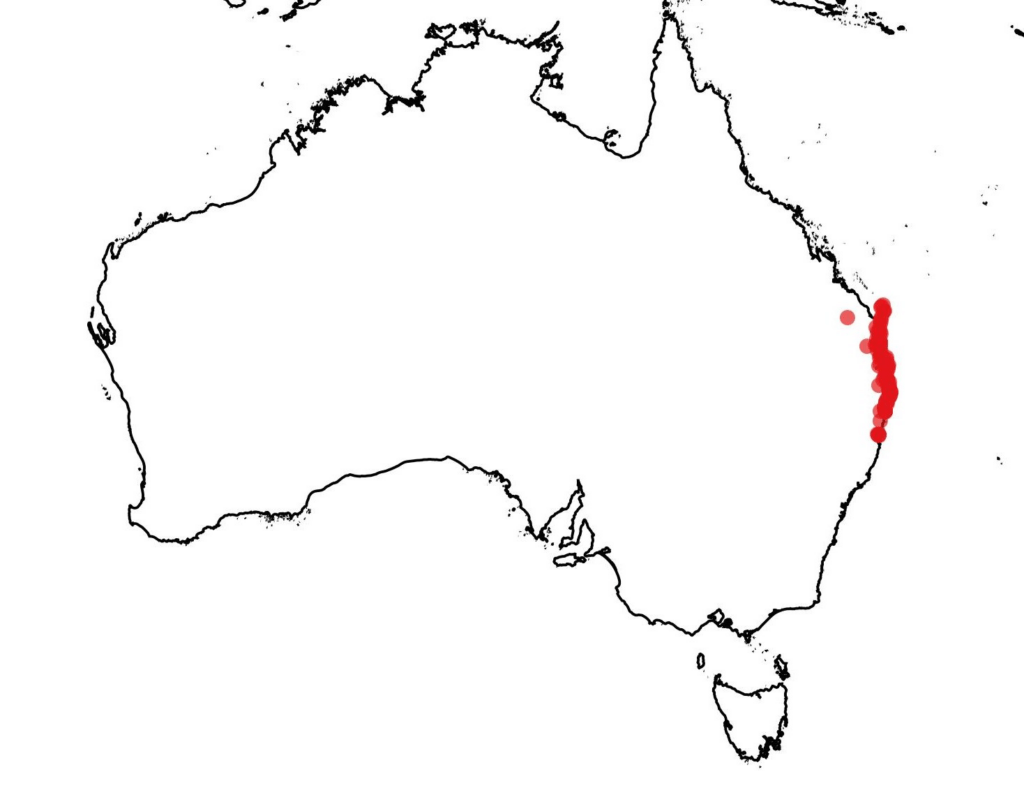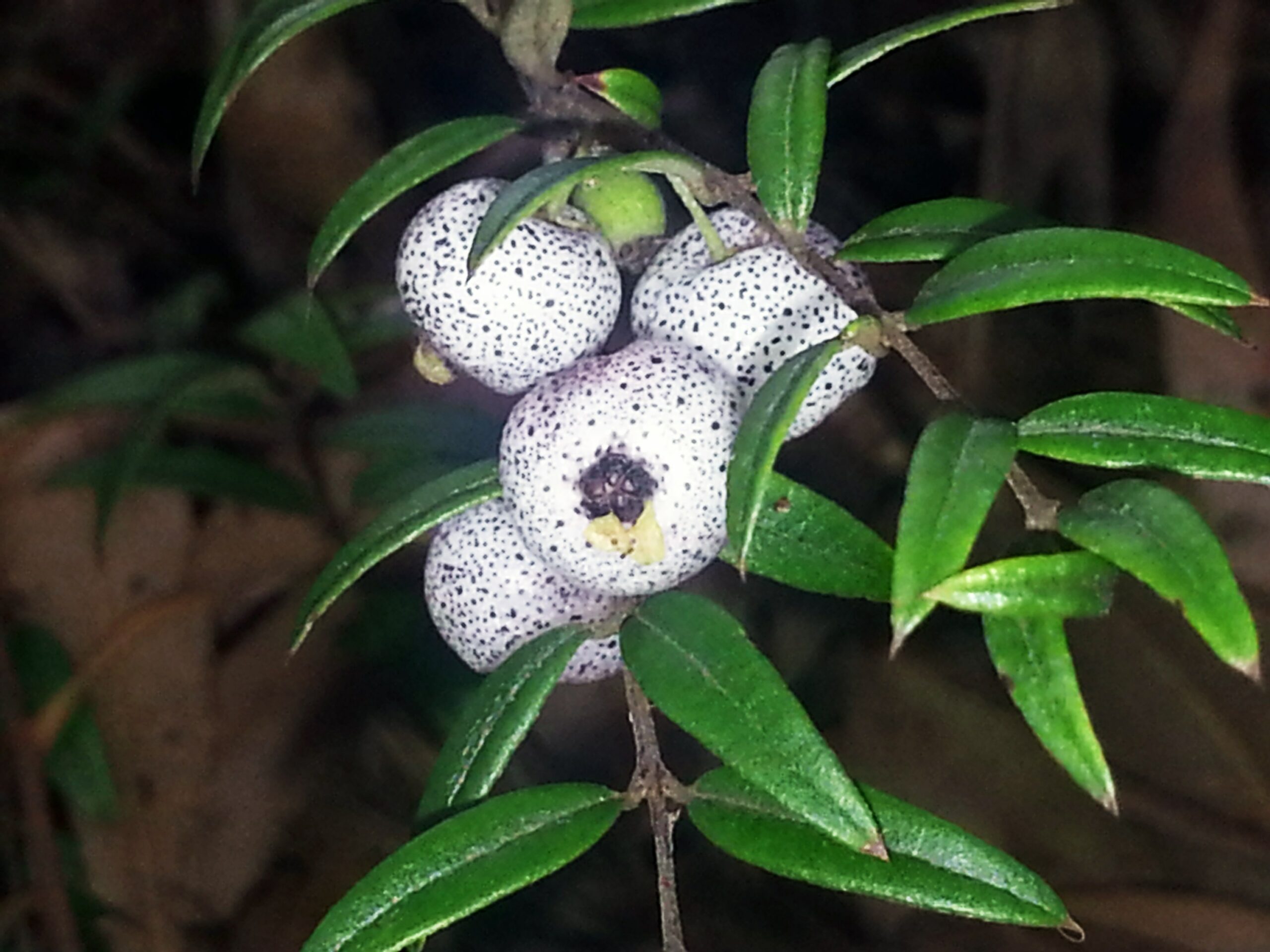Austromyrtus dulcis
Common name: Midyim Berry
- I grow best: Tolerates light frost
- Part shade/morning sun
- Full sun/ part shade
- Small shrub, height 1 m, width 1.5
- Well-drained soils, adaptable
- Flowers – spring, summer
- Edible sweet tasting fruit
- Attracts – bees, seed eating birds, butterflies
- Eastern Suburb Banksia Scrub
Looks like: They are small trees or shrubs and can be found in woodlands, heath, forests or rainforest fringes.
The leaves of A. dulcis are glossy dark green lanceolate 9-30 mm long by 3-10 mm wide with numerous conspicuous oil glands. They are arranged in opposite rows. The undersurface of the leaves has a dense covering of appressed hairs giving it a pale appearance. The young coppery coloured growing shoots are densely silky hairy.
The flowers are 7-1 0 mm in diameter and have white ovate petals. They are usually borne in clusters of 2-5 flowers in the upper axils, although solitary flowers are also common. In its natural habitat A. dulcis flowers in spring and summer while in Canberra the flowering time is summer to mid-autumn.
An attractive period for the plant is the fruiting stage. The fruits are berries containing 3-9 pale brown seeds. They are white and covered in small blue black spots, giving the fruit a mauvish appearance. The fruit are edible and have a sweet taste.
A dulcis are relatively easy species to propagate. Fresh cleaned seed germinates in 3-4 weeks while uncleaned fruits take about a week longer. Although the testa (the outer coat) of the seed is hard no mechanical scarification is necessary. Propagation from cuttings is also easy.
Habitat: Sandy soils in heath, scrub or open forests and occasionally on the margins of rainforests, East Coast Australia
| Family | Myrtaceae |
| Plant Type | Small shrub |
| Width | 1 |
| Flowering Time | Spring, Summer, Autumn |
| Soil Type | Sandy, Loamy, Sandy loam, Clay loam |
| Climate Zone | Sub-tropical, Warm temperate |
| Growth Habit | Evergreen, Spreading, Weeping |
| Soil Moisture | Well-drained, Moist moderate drainage |
| Special Uses | Edible, Decorative fruit, Erosion control, Playground friendly |
| Height | 1 |
| Flower Colour | White |
| pH Level | Acid, Neutral, Alkaline |
| Plant Environment | Low maintenance garden, Courtyard, Poolside, Container growing, Flower garden, Coastal garden |
| Light | Sunny, Light shade, Half shade |
| Lifespan | Perennial |
| Frost Tolerance | Tolerates light frost |
| Attracts Wildlife |
Distribution:

Traditional uses: Edible bushtucker plant. Are among the most delicious of all the bush tucker plants, similar in taste and appearance to the blueberry; reported to be a favourite Aboriginal bushfood around Moreton Bay.

